 |
 |
 |

September / October 2005

Patient Safety in England and Wales
Developing Solutions to Promote Safer Practice
By Helen M. Glenister, PhD, MBA, BSc (Hons)
The National Patient Safety Agency (NPSA) is a national body (part of the National Health Service [NHS]) in England, established in 2001 to promote patient safety. The Agency aims to identify trends in patient safety problems using its own National Reporting and Learning System (NRLS) and data from other sources, provide tools for staff working within the NHS to understand the underlying causes of patient safety incidents, and develop solutions to reduce the risk of patient safety incidents at the national level.
Although patient safety has received increased attention in recent years, the focus has been on the epidemiology of errors and adverse events/patient safety incidents rather than practices to reduce such events. Little is written on approaches to solution development to reduce the risk of patient safety incidents and encourage safer practice.
As a national organization, the NPSA must be confident that the solutions that are developed address patient safety issues and do not pose additional risks. The NPSA has therefore identified the following steps for identifying solutions. These steps could also be applied in a local healthcare setting.
Step 1: Understand the problem.
Have a clear understanding of the nature and extent of the problem in terms of the actual or potential outcome for the patient and the root causes. Information is gathered from various sources including local and national patient safety incident and risk management reporting systems, the literature, patient surveys and focus groups, and data held by other organizations. The NPSA has set up a Patient Safety Observatory (NPSA, 2005a) to compare and combine data from the various sources. In the local setting, various information sources can also be reviewed. Good information is important for understanding what needs to be done.
Risk assessment techniques have also been used to help ensure new initiatives are designed and implemented to provide safer care. An example is the risk assessment of the Hospital at Night scheme being introduced as a new model for delivering care, which introduces a competency-based multidisciplinary team and shift system for healthcare delivery at night (NHS Modernisation Agency 2004). In the new care delivery model, increased numbers of care transfers between teams has been identified as a new risk. Ways of mitigating this risk are being considered. Based on this work, a risk assessment guide has been produced (NHS Modernisation Agency and NPSA, 2005).
Step 2: Identify potential solutions.
After priority risk areas or root causes are identified, potential solutions are identified. This usually occurs through multidisciplinary teams including frontline doctors and nurses, human factor specialists, and design specialists. Gathering information from patients takes into consideration their perspectives as well.
Our approach has been to identify solutions that actively address root causes to reduce the risk of patient safety incidents rather than choosing more passive methods. Active methods encourage staff to be more vigilant in terms of their working practice. An example includes applying mistake-proofing approaches to design out the potential for harm. At NPSA, we have worked with vendors of medication prescribing software packages to encourage them to incorporate alerts and prompts so that it is not possible to prescribe methotrexate daily (which was found to be a root cause for overdosing in certain conditions) unless the system was overridden. This process also includes safeguards. This is different than a more passive approach, which would have been adopted previously, to ask health professionals to take more care when prescribing methotrexate. Various solutions are prioritised by staff on the basis of judgements about the perceived effectiveness of the solution.
Step 3: Assess the risk of solutions.
All solutions are risk assessed to try to ensure that they are not going to introduce other potential risks. For example, one solution to increase hand hygiene compliance (which forms an element of a national cleanyourhands campaign) was to promote the use of alcohol based products at the bedside (NPSA, 2004a). Using risk assessment, the potential risks of fire and dermatitis were identified. Working with various experts, it was decided that the risks were not high enough to warrant not promoting alcohol-based products.
Step 4: Pilot and learn.
If the solution is worth pursuing, we invite health organizations to volunteer to pilot solutions. The purpose of these pilots is to test the solution's usefulness and learn lessons for wider implementation. For example, in the cleanyourhands campaign, the pilot revealed the managerial, ward level, and individual critical success factors which have been built into the implementation of the campaign (NPSA 2004b).
At this time, if appropriate, a cost benefit analysis will be undertaken and model spreadsheets will be prepared to assist organizations in gathering information to inform decisions about particular solutions if they require financial resources for adoption.
Step 5: Implement solutions.
Depending on what is learned from the pilot programs, solutions are implemented. Not all solutions require information be passed on to the health service, although we do issue patient safety alerts, safer practice notices, and patient safety information sheets. Some solutions are about influencing other organizations, such as the pharmaceutical industry, to change the presentation of drugs or packaging or other organizations that are producing guidance about the delivery of care. With the latter, the agenda is to make sure the patient safety issues are addressed, that mistake proofing and risk assessment methodologies are adopted in the development of the guidance.
Step 6: Evaluate solutions.
It is important to evaluate solutions both in terms of process and uptake as well as whether they make a difference in terms of patient safety incidents. The latter is difficult to determine since a baseline does not always exist. Evaluation is built into our processes so that it is considered early on in the solution development process. Evaluation has been undertaken by the NPSA or commissioned independently through the Department of Health's (England) Patient Safety Research Programme.
Step 7: Close the loop.
It is important to have some kind of process to check any solution that has been implemented and if not, the necessary follow-up is taken forward. In England an electronic safety alert broadcast system can disseminate information and requires hospitals and other health service providers to indicate whether they have taken necessary action. Using this system and conducting follow-up research, we have established that 167 of 176 acute hospital trusts in England (95%) are now compliant with a standardised number for summoning the "crash call team" or cardiac arrest team. Before issuing the alert only 34% of hospitals were compliant.
These steps could be adopted by any organization that is in the process of developing solutions. The development process needs to be rigorous so that solutions do not cause harm. If they have gone through a systematic process there is potential for solutions (after risk assessment) to be endorsed and applied in the wider health setting and perhaps internationally.
Learning for the Future
Learning from solutions development so far suggests that solutions need to be practical and deliverable. They also must not create extra risks in other domains of healthcare. It is therefore important to understand the environment in which care is delivered. Various reviews (European Observatory on Health Care Systems, 2002 and Institute of Medicine, 2001) suggest that medicine and healthcare in all sectors (hospitals and primary care) are becoming more complex. This is not unique to one country. With this complexity, there is the potential for error. Health professionals who deliver care are a mobile population, frequently changing jobs, particularly at the beginning of their careers.
Standardization
Systems and processes in healthcare delivery often evolve over time and differ from one department, hospital, or healthcare organization to another. This can cause confusion for staff, especially if they are working in a number of different departments and organizations. One approach is to standardise as many systems as possible.
Standardizing to one number for summoning the cardiac arrest team in hospitals came from front-line staff. This was considered important since clinicians who worked across various organizations were losing valuable time by using the incorrect number, and patient safety was being placed at risk by delays in the arrival of the team.
Some aspects of care present risks if they aren't standardised. As part of a programme of work to address wrong site surgery, a major risk was that clinicians have different ways for indicating the area to receive surgery. Sometimes it is policy to mark the affected area (for example, with a cross or arrow) whereas in other hospitals, clinicians also marked the unaffected area with a cross. Working with medical royal colleges and other professional bodies, national recommendations have been established for correct site surgery marking (NPSA, 2005b).
Can there be more standardization of equipment in hospitals to reduce the risk of patient safety incidents? Other industries such as airline, nuclear, and defence have standardised equipment and interfaces so that the operators only have to become familiar with a small range of equipment. In England, over 700 patient safety incidents are associated with infusion devices each year; 19% of these are attributed to user error. The root causes were found to be that staff members were not familiar with the use of the device. Some might have advocated more education and training. But it can be questioned whether this would address the root causes, especially as a hospital can have as many as 31 different infusion device types, and in some cases and the same type of device can have multiple configurations. The solution being promoted is to reduce the range of infusion device types in use, and within each type, have agreed upon default configurations (NPSA 2004c,d).
The standardization of equipment can have a place in promoting patient safety. Purchasing decisions need to be based on more than short-term value. They need to consider the effects of purchasing different types of equipment on other systems within the organization. An approach to promote sensible standardization (in terms of range of products available) can promote patient safety and also potentially achieve cost savings in the medium and longer terms.
Products that look similar should also not be purchased. Some tablets that contain different amounts of medication look very similar (e.g. 2.5mg and 10mg tablets of methotrexate). Purchasers can make sure that the tablets procured are visually distinguishable by shape, size, and packaging. This is one of the actions recommended to reduce the risk of harm caused by oral methotrexate (NPSA, 2004e)
There are many examples where the design of healthcare products and drugs and associated labelling, information, and packaging are considered to be contributory factors to patient safety incidents. One such example is drug packaging on which names are similar, causing one drug to be mistaken for another. Although packaging needs to be addressed by the regulators, it also needs to be addressed in purchasing specifications and by industry.
Our experience so far is that some industry sectors want to develop products that promote patient safety. There have been examples in which the pharmaceutical industry has modified the shape of tablets to help clinicians and patients distinguish different dosages of tablets. There are opportunities to go further so that it is not possible to use the wrong tubes, syringes, or connectors with the wrong equipment. As Norman (1988) notes, "If an error is possible, someone will make it."
Another opportunity for safety improvement is to have more conformity of user/device interfaces. This has occurred in the car industry, which could not function without a degree of standardization (e.g. accelerator on the right, clutch on the left). Standardization of this sort is certainly worth exploring in healthcare.
Design is particularly important with the evolving developments in information technology in healthcare. Many opportunities exist to promote safer practice through tools that can improve communication, make knowledge more readily accessible, require key pieces of information, assist with calculations, perform checks in real time, assist with monitoring, and provide decision support.
Involving Patients
Patients and care givers provide a useful perspective on patient safety issues and can be involved in developing solutions. Some individuals question whether or not patients want to get involved. The various patient stories in the literature (Goeltz and Hatlie, 2004; Richardson, 2004; King, 2002) suggest that patients are happy to contribute their perspective of an issue. Patients also do not mind doing some of the prompting to promote good care. The national cleanyourhands campaign includes patients asking staff to undertake hand hygiene. As part of preparatory work, we undertook a survey of 318 hospital patients to determine if they would be happy to ask healthcare professionals to undertake hand hygiene. Seventy-one percent of patients indicated that they thought they should be involved (NPSA 2004b).
Summary
The solutions discussed here have the potential to reduce the risk of patient safety incidents. To be effective they need to address the real root causes of incidents or risk areas and need to reflect the complexities of healthcare delivery and environment. It is important that solutions are risk assessed before they are introduced, and any risks identified be mitigated. This article has identified different approaches for developing solutions and identified some steps that should be considered within solution development. In today's environment, solutions need to be intuitive and design out potential problems so that health professionals can concentrate on the delivery of more complex healthcare.
Helen Glenister (Helen.Glenister@npsa.nhs.uk) is director of safer practice and deputy chief executive of National Patient Safety Agency and visiting professor at European Institute of Health and Medical Sciences, University of Surrey. She is a registered nurse and has held various posts in nursing, research and management within the National Health Service (NHS) and Department of Health (England). She has a PhD, MBA and BSc (Hons) in nursing studies.
Reference
European Observatory on Health Care Systems. (2002). Health care systems in eight countries: trends and challenges. London: The London School of Economics and Political Science.
Goeltz, R. & Hatlie, M. J. (2004). Trial and error in my quest to be a partner in my healthcare: A patient's story. In B. Youngberg & M. J. Hatlie (Eds.), Patient Safety Handbook, Sudbury, MA: Jones and Bartlett.
Institute of Medicine, Committee on Quality of Health Care in America. (2001) Crossing the quality chasm: A new health service for the 21st century. Washington DC: National Academy Press.
King S. (2002) Rekindling the central fire: Stories can change your life. Presentation at 5th Annual NPSF Patient Safety Congress, March 12-15, Washington, D.C..
National Patient Safety Agency. (2004a). Clean hands helps to save lives. Patient Safety Alert 04. London: National Patient Safety Agency.
National Patient Safety Agency. (2004b). Achieving our aims: evaluating the results of the pilot Cleanyourhands campaign. London: National Patient Safety Agency.
National Patient Safety Agency. (2004c). Improving infusion device safety. Safer Practice Notice 01. London: National Patient Safety Agency.
National Patient Safety Agency. (2004d). Standardising and centralising infusion devices — A project to develop safety solutions for NHS Trusts. London: National Patient Safety Agency.
National Patient Safety Agency. (2004e). Reducing the harm caused by oral methotrexate. Patient Safety Alert 03. London: National Patient Safety Agency.
National Patient Safety Agency. (2005a). Building a memory: preventing harm, reducing risks and improving patient safety. London: National Patient Safety Agency.
National Patient Safety Agency. (2005b). Correct site surgery. Patient Safety Alert 06. London: National Patient Safety Agency.
NHS Modernisation Agency and National Patient Safety Agency. (2004). Hospital at night: Patient safety risk assessment guide. London: NHS Modernisation Agency.
NHS Modernisation Agency. (2004). Findings and recommendations for the hospital at night project. London: NHS Modernisation Agency.
Norman, D. (1988). The design of everyday things. London: Basic Books.
Richardson, A. Infusion devices: The views of patients. Health Care Risk Report 2004, 10(2), 16.
|
 |
 |
 |
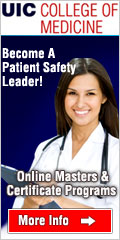

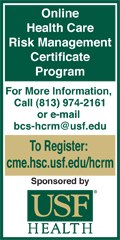





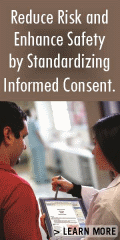

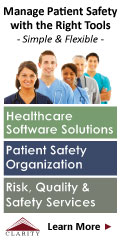

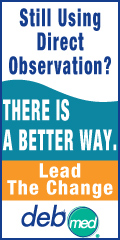





|
 |



